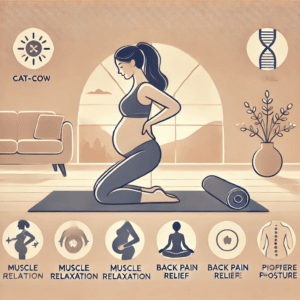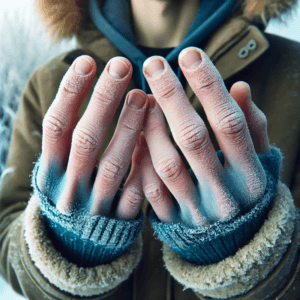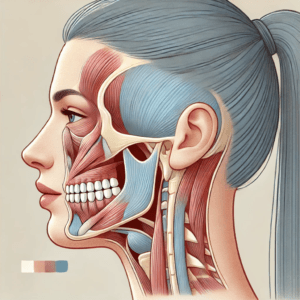What Are the First Warning Signs of a Stroke in Adults? 🤔
Table of Contents

What Are the First Warning Signs of a Stroke in Adults? 🚨
Why Should You Care About the Early Signs of a Stroke?
Ever wondered, “Would I know if someone near me was having a stroke?” Or even scarier—“Would I recognize if I were having one?”
Every year, millions of people are caught off guard by strokes. The reality? Time is brain. The faster you act, the better the chance of survival and recovery. But here’s the problem—most people don’t know the first warning signs of a stroke until it’s too late.
Let’s fix that.
In this post, we’ll break it all down in plain English. You’ll learn:
- What to look out for 🧠
- How to respond FAST ⏱️
- When to seek help (hint: immediately)
- And how to protect yourself and your loved ones
Sound good? Let’s dive in 👇
🧠 What Exactly Is a Stroke?
And why does it happen so suddenly?
A stroke occurs when blood flow to part of your brain gets blocked or reduced. Without oxygen-rich blood, brain cells begin to die in minutes.
There are two main types:
- Ischemic stroke – caused by a blood clot (accounts for ~87% of strokes)
- Hemorrhagic stroke – caused by bleeding in the brain
And then there’s the TIA (Transient Ischemic Attack), aka a mini-stroke—a massive red flag that a bigger stroke could be on the horizon.
So why should you care? Because the symptoms start fast. And if you miss them, the damage can be life-altering.
⏱️ What Are the First Warning Signs of a Stroke in Adults?
Here’s the FAST rule—literally:
🧍♀️ F – Face Drooping
Is one side of the face numb or drooping? Ask the person to smile. Is it uneven?
💪 A – Arm Weakness
Ask them to raise both arms. Does one drift downward?
🗣️ S – Speech Difficulty
Is speech slurred or strange? Can they repeat a simple sentence?
⏰ T – Time to Call 911
If you see ANY of these signs, get emergency help immediately.
But wait—those aren’t the only symptoms.
Other early signs to look for:
- Sudden confusion or trouble understanding
- Sudden trouble seeing in one or both eyes
- Sudden dizziness, trouble walking, or loss of balance
- A sudden severe headache with no known cause
👉 If any of this happens, don’t Google. Don’t wait. Call 911.
⚠️ What Does a Stroke Feel Like? (According to Survivors)
Real talk: survivors describe stroke onset as…
- “Like someone flipped a switch”
- “My body went numb and I couldn’t speak”
- “Everything just felt off—I couldn’t move my arm”
It’s often painless, which is part of the problem. You don’t feel pain, but something feels wrong.
So the takeaway? If your body suddenly stops behaving normally, treat it like an emergency.
🚑 What Should You Do If You Suspect a Stroke?
Here’s your game plan:
- Call 911 immediately – don’t wait, don’t drive yourself
- Note the time symptoms started – this helps doctors decide on treatment
- Stay calm – keep the person safe and lying down if possible
- Don’t give food or meds – including aspirin unless a doctor says it’s okay
Speed = survival. Clot-busting medication is only effective within 3-4.5 hours of symptom onset.
🛡️ Can You Prevent a Stroke Before It Happens?
Here’s some good news: 80% of strokes are preventable.
Let’s break it down:
- 🩺 Manage blood pressure – it’s the #1 stroke risk
- 🥦 Eat heart-healthy foods – less salt, more greens
- 🚶 Stay active – aim for 30 mins a day
- 🚭 Stop smoking – it doubles your stroke risk
- 🍺 Limit alcohol – too much raises blood pressure
- 💊 Control diabetes & cholesterol – work with your doctor
It’s not about being perfect. It’s about being proactive.
🧬 Who Is Most at Risk for a Stroke?
Strokes don’t discriminate, but certain factors raise your odds:
- Age 55+
- Family history of stroke
- African American and Hispanic individuals (higher risk)
- Men (slightly higher risk), but women are more likely to die from stroke
- High blood pressure, high cholesterol, diabetes
⚠️ If you’re in a high-risk category, annual checkups are non-negotiable.
✅ How Can You Stay Prepared?
Set yourself up for success:
- Save emergency contacts in your phone
- Learn the FAST signs
- Talk to your family—create a stroke response plan
- Get regular checkups and monitor your vitals
You don’t need to live in fear—just be ready.
💬 Conclusion: What’s the Real Takeaway?
Let’s cut to the chase.
Strokes strike fast—and the early warning signs of a stroke in adults are often missed. But now you know what to watch for.
To recap:
- Use FAST: Face drooping, Arm weakness, Speech difficulty, Time to call 911
- Know the subtle signs: confusion, balance issues, vision trouble
- Act immediately—every second matters
- Take prevention seriously: lifestyle + regular checkups
Don’t wait to learn this after it’s too late.
Your life (or someone else’s) could depend on spotting the early signs of a stroke.
❓ Frequently Asked Questions (FAQ)
What is the first sign of a stroke most people notice?
Usually, it’s sudden numbness or weakness on one side of the body—especially the face or arm.
Can you have a stroke without knowing?
Yes—some strokes, especially mini-strokes (TIAs), can occur with subtle or no symptoms.
How fast do stroke symptoms appear?
Instantly. Most stroke symptoms come on suddenly, within seconds or minutes.
Is it a stroke if symptoms go away quickly?
It could be a TIA—which is a serious warning sign. Get checked immediately.
Can stress cause a stroke?
Chronic stress may raise your blood pressure, which is a major risk factor for stroke.
What does a mini-stroke feel like?
It might feel like sudden dizziness, blurred vision, or slurred speech—then it passes. Still dangerous.
What’s the best way to prevent a stroke?
Manage your blood pressure, stay active, avoid smoking, eat well, and get regular health checks.
📂 Categories
Category: Neurology & Brain Health
🌐 References
- American Stroke Association – Stroke Symptoms
- CDC – Stroke Facts
- Mayo Clinic – Stroke Diagnosis and Treatment













Post Comment